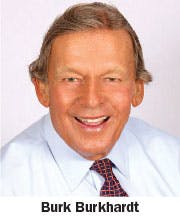Sponsored
Burk Burkhardt has worked on acquisitions of electrical distributors for more than 20 years at HT Capital Advisors. The company is an investment banking firm with a major focus on the electrical wholesaling industry, and over the years it has represented the owners of many electrical distributors in mergers and acquisitions. These companies include but are not limited to Braid Electric Supply, Crawford Electric Supply, Electrical Wholesalers, Friedman Electric Supply, Harris Electric Supply, Hill Country Electric Supply, Mustang Electric Supply, Mag-Trol Long Beach, Independent Electric Supply (California), Owens Electric Supply, Project Lighting Co., Ralph Pill Electric Supply, Sonepar and Weidenbach-Brown.
As an executive on the HT Capital Advisors team who has worked on many of these acquisitions, we thought he could give us a good idea of what may happen with mergers and acquisitions in the future. He offered his insight in the following Q&A.
Consolidation in the electrical market is happening at a slower pace than in other distribution-based market verticals. Historically speaking, what do you think have been the primary drivers for the pace of mergers and acquisitions in the electrical wholesaling industry?
The primary forces driving consolidation in the electrical distribution industry have been the aggressive acquisition strategies of the national firms and some large regional firms, including Sonepar, Rexel, WESCO, CED, Crescent and Border States, to enhance their growth prospects and geographic footprints and product offerings; and the fact that due to the highly fragmented nature of the industry, there have been many companies which are potential acquisition candidates. Their owners have been receptive to selling their companies for a variety of reasons, including retirement, estate planning, competitive factors, vendor issues, and lack of financial resources for important capital expenditures, including IT upgrades.
Looking down the road, do you see any big changes in these primary drivers for mergers and acquisitions in the electrical wholesaling industry, or the pace of these deals?
The primary drivers will continue to be the presence of active buyers, and many potential sellers. The pace of M&As, and the industry’s merger/acquisition climate will continue to fluctuate because it’s closely tied to general economic conditions, specifically the level of residential, commercial and industrial building activity. When the economy is in recession and revenues and profitability are down, company owners are reluctant to consider selling, and the buyers have tended to terminate their acquisition activity.
What does the environment look like for acquisitions over the next few years when you consider the overall economic climate, cost of borrowing capital, etc.? Any wild cards that acquirers or acquisition candidates should be looking at?
With the continuation of reasonably good economic conditions in most of the United States and the revenue and profitability recovery that most companies have experienced over the past two years, we anticipate an increased level of merger/acquisition activity in 2015 and beyond. WESCO’s recent acquisition of our client Hill Country Electric Supply in Texas, is an example of a transaction that probably would not have happened when the economy was in recession.
We believe the industry is currently experiencing a seller’s market, and that a window of opportunity is open for owners of companies of all sizes to sell their companies at attractive valuations and satisfy their other objectives. Timing is often everything in the world of mergers and acquisitions, and the ideal time to explore selling a company is when business is on the uptick and there are multiple buyers. All of the nationals and several large regionals are actively on the acquisition hunt for sizable acquisitions, as well as for smaller transactions to fill in gaps in their geographic footprint.
Would it be possible for a new player from outside the electrical industry to come into the market and build a large regional or even national presence through acquisitions? Or do you think it would be more likely that an existing electrical distributor could/would build a large platform?
While we believe electrical distributors will be the primary buyers of other companies in the industry, they may face some competition from companies in other distribution sectors in the future. Many industry observers wonder whether Kaman Corp.’s foray into the industrial segment with the acquisition of Minarik and the subsequent favorable distribution arrangement with Schneider could be a precursor of other similar transactions. We have received inquiries over the past year from several large companies in other distribution sectors, including plumbing, flowmeter, and power transmission distribution, expressing an interest in acquiring an electrical distribution company.
We believe that it’s possible that one of the top 50 companies on EW’s Top 200 list could be acquired by a large company from another wholesale distribution sector to form the basis for a substantial regional or national platform. We know one or two of them are thinking about it because they have contacted us to see if we have any ideas.
There have been many international transactions over the past few years, including Sonepar’s recent agreement to acquire Rexel’s operations in Brazil, Chile and Peru. Do you expect to see more international transactions in 2015 and beyond?
We believe that Sonepar and Rexel will continue to expand their international operations through acquisition. Based on recent involvement we have had we believe that several other large electrical distributors, some with limited international exposure currently, are interested in foreign acquisitions. Also, while quiet lately, we believe that EDGE Investment Partners, the 11-member consortium of U. S. electrical distributors, is still on the prowl for acquisitions in foreign markets. For many years, Eric Lomas, the president of our firm, and I managed our Electrical Distribution team. In recognition of an increase in domestic and international merger/activity we recently beefed up our team with the addition of Jean-Damien Perrier, who has been with our firm for six years, and has 20 years of international investment banking experience.
With all the transactions HT Capital has completed over the past 20 years what has been the valuation range, and what kind of valuations are you seeing today?
Over the past 20 years, and in more recent years, the valuation range has been in the 4x-8x adjusted EBITDA (earnings before interest, taxes, depreciation and amortization) adjusted for excess salaries and bonuses, and for various non-recurring expenses. On occasion we have achieved valuations over 8x for our clients, usually for large extremely well-positioned companies sought after by multiple potential buyers. Many factors affect valuation, including company size, historic track record and growth prospects, attractiveness of the geographic territory, vendor and customer relationships, and management strength, to name a few. We have found that many owners do not have a realistic idea of what their companies are worth. To avoid wasting anyone’s time, prior to taking on an assignment we usually give the owners what we believe is an achievable valuation range.



